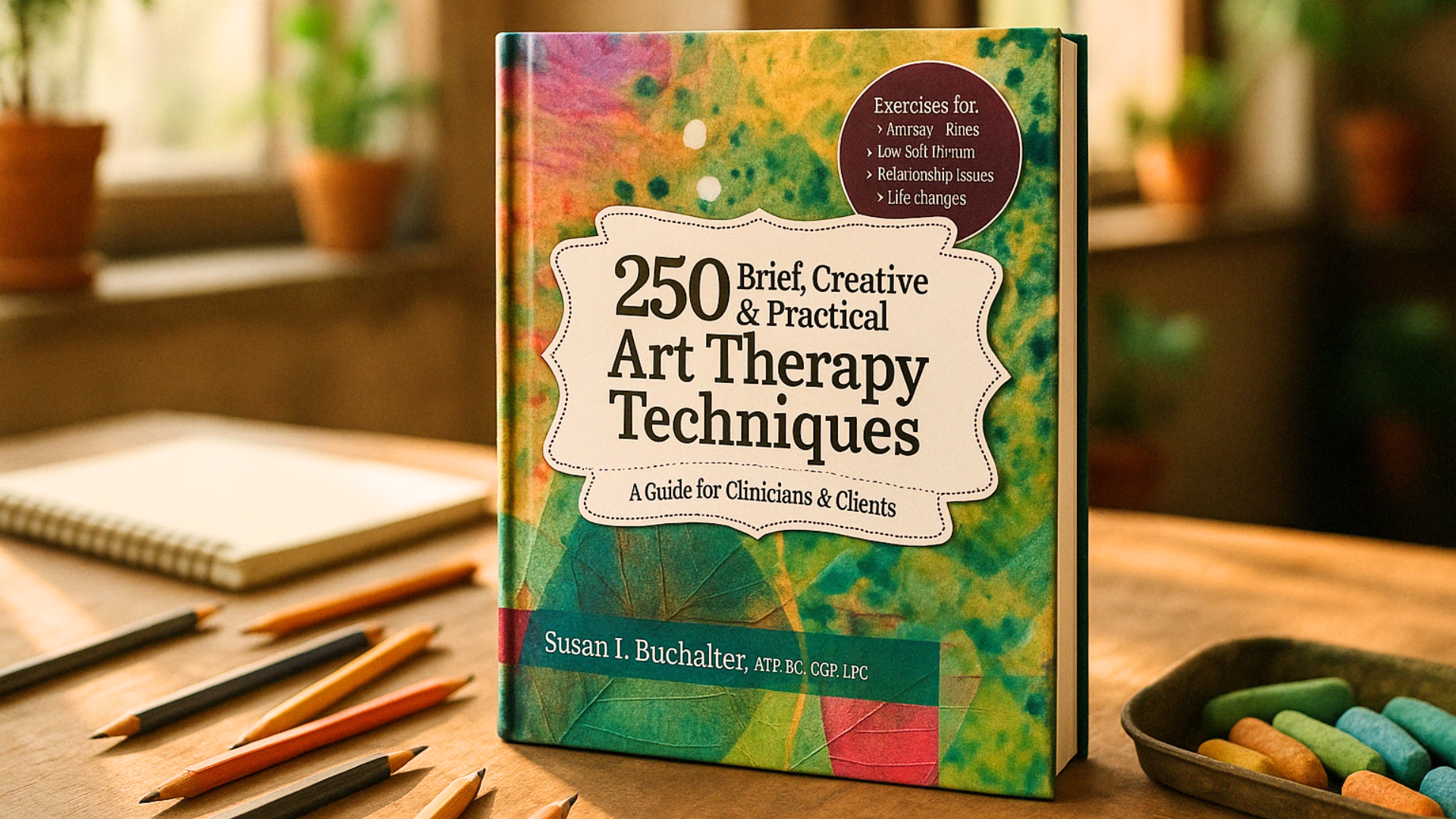Practical Art Therapy for Connection, Insight, and Growth

Book Review: 250 Brief, Creative & Practical Art Therapy Techniques by Susan I. Buchalter
A flexible and grounded collection of creative interventions for emotional healing, connection, and insight
Susan I. Buchalter’s 250 Brief, Creative & Practical Art Therapy Techniques is a steady and reliable resource for facilitators who use creativity as a bridge to emotional expression and connection. Designed for clinicians, educators, and group leaders, this book offers short, low-prep art activities that can support a wide range of client needs. It is practical, adaptable, and rooted in the belief that art can gently open the door to insight and emotional growth.
This is not a book for artists or those looking to teach art skills. It is a book for those who want to help others process, reflect, and express through image and imagination.
What the book promises
This collection promises to provide a wide variety of quick, accessible art therapy exercises that can be used across different age groups, populations, and therapeutic settings. Each technique is designed to take just a few minutes to set up and carry out, making the book especially valuable in group sessions, classroom environments, and time-limited one-on-one work.
Buchalter promises not only creative inspiration but emotional depth, offering ways for clients to explore self-awareness, communication, mindfulness, and coping without needing advanced materials or prior art experience.
What the book delivers
The book delivers a well-organized and generous range of activities across several core themes. These include self-esteem, relationships, stress management, communication, emotional regulation, and goal setting. Each chapter opens with a short introduction, followed by individual prompts that include a title, clear instructions, and optional reflection questions.
The exercises are designed to be simple enough for immediate use, while still offering meaningful insight. Many use basic materials like markers, paper, scissors, or collage supplies. Activities such as “Draw Your Safe Place,” “The Emotion Wheel,” or “Invisible Strings” invite clients to access inner experiences through metaphor, movement, and mark-making.
Some exercises are warm-ups designed to ease participants into a creative headspace. Others are deeper explorations that can help clients name, process, and share emotions. Brief client examples throughout the book offer real-life glimpses of how the prompts have worked in clinical settings. These moments add weight and clarity, showing that even the simplest exercise can spark meaningful reflection.
Style and structure
Buchalter’s tone is professional, calm, and approachable. She writes with the clarity of someone who has used these exercises many times and knows how they land in real rooms with real people. The writing avoids academic language and instead offers clear, direct guidance.
The book is structured for practical use. Each exercise stands on its own, allowing readers to flip through and find something based on time, materials, or client needs. There is no requirement to move through the book in order. The design supports spontaneity and responsiveness, which are essential when working with groups or navigating fluctuating emotional states.
There are no illustrations, which keeps the focus on process rather than outcome. Buchalter encourages facilitators to adapt each activity freely, trusting that the value lies in engagement and reflection, not in what the artwork looks like.
Where the book shines
This book shines in its usability and sensitivity. The prompts are crafted with emotional safety in mind and are gentle enough to use in settings where clients may be resistant or unsure. The activities help people move from hesitation into expression without overwhelming them.
Another strength is the diversity of applications. These exercises are suitable for children, teens, adults, and elders. They can be scaled up for deeper work or kept light and playful, depending on the context. Many are designed to support transitions, grief, anxiety, or self-discovery.
The tone of the book also contributes to its effectiveness. Buchalter respects the reader’s judgment and never positions herself as the only authority. Instead, she offers options and encourages adaptation. This fosters confidence and creativity in the facilitator as well as the client.
Light limitations
Because the book focuses on activities rather than theory, readers looking for detailed clinical explanations or treatment models will not find them here. It is a toolbox, not a framework.
Some prompts are similar in format or theme. This is to be expected in a collection of this size, but readers may want to mark their favourites or create their own groupings for future use.
The lack of illustrations may be a challenge for visual learners or new facilitators who prefer to see example outcomes. However, this choice is intentional and helps keep the process client-led and open-ended.
Final thoughts
250 Brief, Creative & Practical Art Therapy Techniques is a trusted and adaptable guide for anyone facilitating creative exploration in therapeutic or educational spaces. Susan I. Buchalter offers more than a list of ideas. She offers a way of working with people that is curious, responsive, and respectful.
This book meets people where they are. It invites expression without pressure and encourages healing through play, reflection, and gentle witnessing. The activities are practical and easy to implement, but they hold space for something deeper to emerge.
Highly recommended for therapists, school counsellors, support group leaders, and educators who want simple, effective ways to use art for emotional support and connection.